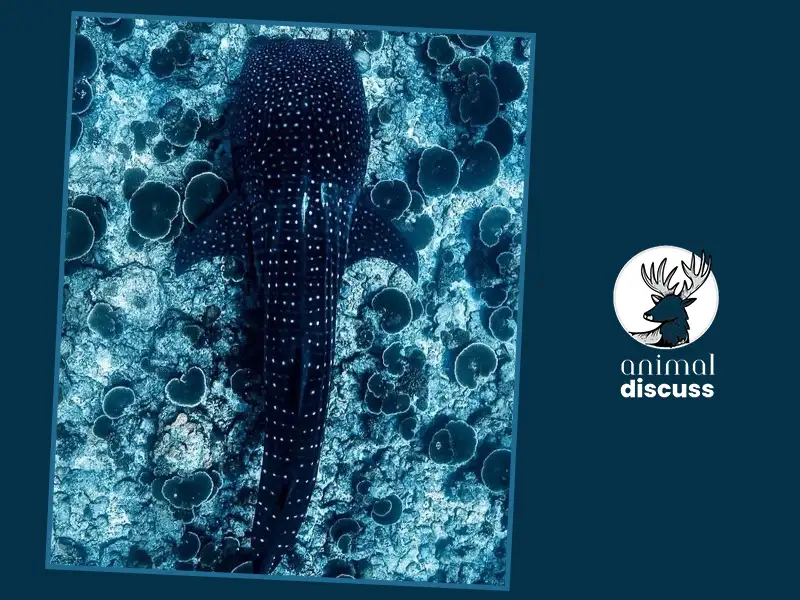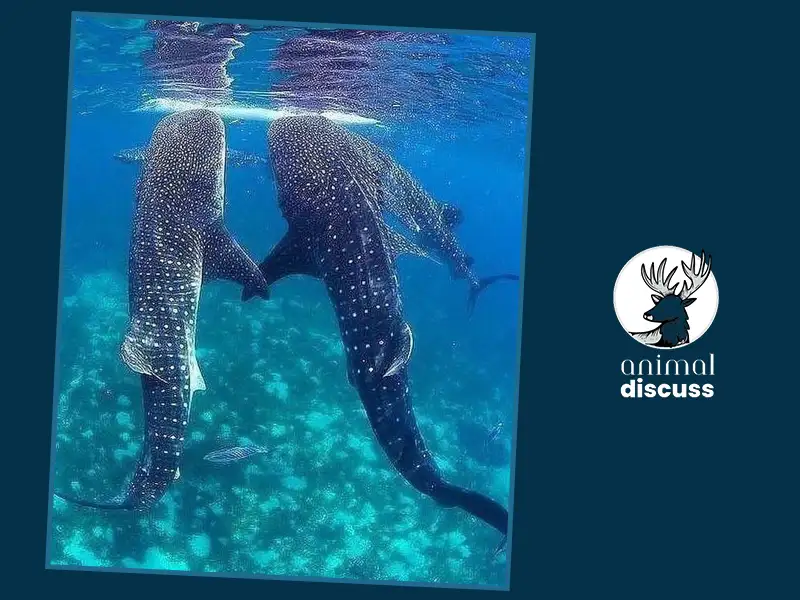Do you ever think about what exactly a whale shark eats? Or What is this gentle giant’s appetite? Well, whale sharks mostly have a carnivorous diet and sometimes it becomes an omnivorous diet also.
However, this gentle giant is a filter feeder and planktons are their favorite food in their long lifetime. One of the most astonishing facts about whale sharks is that they have approximately 1500 gallons of water per hour.
In this blog, I will delve into the interesting world of whale shark feeding, exploring the complete list of their appetites, the mechanism of their filter feeding, nutritional requirements, and also how they maintain their incredible size.
What Do Whale Sharks Eat?
Whale Sharks’ feeding process is unique rather than other species in the ocean. Moreover, they pick random food from the sea and mostly eat plankton. They also eat phytoplankton which are found deep in the sea.

However, they are able to consume large amounts of food because of their size. Whale Sharks have numerous teeth, and they filter water to eat food by their unique mechanism.
To know more about Whale Sharks’ food items and mechanisms, let’s start the discussion below.
A Complete List of Whale Sharks’ Food
Whale Sharks eat very small fishes and plants which are available in the ocean. Some of the food items are listed here: Fish eggs, small crustaceans, Jellyfish, Small shrimp, Krill, Coral, larvae, Algae, Small tuna, Squid, Plants, etc.
However, the whale shark menu is not limited. Some categories of their food items are given below.
- Phytoplankton: These microscopic plants form the foundation of the marine food chain. They provide essential nutrients and energy to the ocean ecosystem.
- Zooplankton: Tiny animals such as shrimp, krill, and small fish make up a significant portion of the whale shark’s diet.
- Squid: These cephalopods are a favorite food source for whale sharks. They provide a rich source of protein.
- Small fish: Whale sharks occasionally feed on small fish, such as anchovies and sardines, when they are abundant.
Mechanism of Whale Sharks’ Filter Feeding
Whale sharks can effectively eat a lot of plankton because of a special eating technique called filter feeding. This system optimizes nutrient intake while reducing energy consumption.

However, whale sharks have 3,000 teeth in each jaw. However, they do not use their teeth for chewing but rather filter foods from water by gill rakers.
This is how they consume their meal.
Firstly, when whale sharks expand their enormous mouths, a true tunnel that is up to four feet wide is created.
After that, the shark draws copious amounts of water into its mouth as it slowly swims through the ocean.
Then, their specialized filter cells and plates known as gill rakers, located within the whale shark’s mouth, capture plankton while permitting water to flow through.
Lastly, the whale shark takes its meal, ready for metabolism, after filtering out the plankton.
Nutritional Requirements of Whale Sharks
Whale sharks require a balanced diet that meets their nutritional needs in order to sustain maximum health and growth.

Let’s examine both macro- and micronutrient balance in plankton’s diet and analyze the dietary requirements of these tiny organisms.
Analysis of planktonic nutritional contents
Whale sharks’ main food source, plankton, is rich in a variety of nutrients. It has a lot of vitamins, minerals, vital fatty acids, and proteins. The shark’s immune system, growth, and reproduction depend on these nutrients.
Balance of macronutrients and micronutrients in their diet
For their metabolic functions, whale sharks require a well-balanced combination of macro- and micronutrients. Plankton proteins help with tissue healing and muscular growth.
Moreover, essential fatty acids support and maintain the health of the skin and reproductive system. Plankton provides vitamins and minerals that are essential to numerous physiological processes.
Implications for maintaining optimal health and growth
Whale sharks get the nutrition they need from a diet that mostly consists of plankton. This guarantees that they have the vitality and resources required for both their remarkable growth rate and general health.
Likewise, they require a high-calorie diet to maintain their energy levels due to their enormous size. Let’s examine whale shark hunting techniques and food collection methods.
How Do Whale Sharks Collect Food?
Whale sharks consume more than only plankton; they can sometimes consume squid and tiny fish, which calls for an alternative method of hunting. In these situations, the whale shark pushes its large body forward, quickly sucking the prey into its mouth.
So, let’s have a brief discussion on the hunting procedures of whale sharks.
Hunting Procedure of Whale Sharks
The strategy used by whale sharks is known as “passive feeding.” With their mouths open, they slowly swim in a current that draws plankton-rich particles closer to their gills. Their speed of swimming is approximately 3 miles per hour.
However, they can effectively filter feed using this technique without actively following or hunting their prey.
Environmental Influence on Whale Sharks’ Diet
The diets of whale sharks are influenced by factors other than their personal tastes. Their dietary choices are influenced by a number of environmental factors, including geographic variances, seasonal fluctuations, and the effects of climate change on food availability.
Seasonal variations
The eating habits of whale sharks change with the season. Plankton blooms occur throughout specific seasons.

In May and August, whale sharks gather on the coast of the Yucatan peninsula and Belize to eat plankton. Furthermore, they are also found near the reefs so that they can have various small fishes along with red snappers’ roes.
So, they accumulate energy reserves by taking advantage of these seasonal fluctuations.
Geographic influences
Whale sharks’ diets are also influenced by their location because they have their favorite places to eat different food. For instance, they like warm water crab larvae and shrimp.
Moreover, for eating anchovies and other small fishes, they are found in coastal areas. Also, they have plankton from upwelling zones where water rises from the depth with rich nutrients.
However, mostly whale sharks grab their food near-surface water so that they can easily take massive amounts of water and suck little fish. Thus, this total ecological variety of the ocean is influenced by these geographic factors.
Impact of climate change on food availability
The location and availability of plankton and other food sources vary significantly as a result of ongoing climate change. This may upset the balance of the food chain and affect whale sharks’ eating patterns.
Warmer oceans could make plankton less available, which could be problematic for these amazing animals.
Frequently Asked Questions
Let’s have a look at some mostly asked questions about Whale Sharks’ dietary habits.
01. How can we protect the dietary resources of whale sharks?
First of all, we have to protect our environment and save the ocean from pollution. Because they live deep into the sea and have food from there.
02. Are there any known predators of whale sharks?
No, they do not have any predators. Because they are at the top of their food chain in the sea. For that reason, no other creatures can harm them.
03. What Animals Compete for Food with Whale Sharks?
Dolphins compete for food with whale sharks. Because their diets overlap with each other, and their relationship becomes competitive.
04. What do Whale Sharks not eat? Or Whale Sharks do not like to eat?
Basically, whale sharks do not eat any large animals. They choose plankton because those are easy to take by their filter mechanism. Also, humans are not on their menu.
05. How Much Do Whale Sharks Eat?
Whale sharks are filter feeders and mostly target small fishes and plankton. They approximately eat up to 45 pounds of plankton per day.
Conclusion
The food preferences of whale sharks provide evidence of the complex balance of the marine environment. These amazing creatures get all the nutrients they need to stay healthy and grow by mostly eating plankton.
Moreover, their unique hunting techniques and filter-feeding system demonstrate how remarkably adapted they are to their surroundings. Their food availability, however, can be impacted by environmental factors like climate change, regional impacts, and seasonal variations.
References
- https://oceana.org/marine-life/whale-shark/
- https://www.americanoceans.org/facts/what-do-whale-sharks-eat/
- https://www.animalwised.com/dietary-habits-of-the-whale-shark-349.html
- https://seaworld.org/animals/all-about/sharks-and-rays/diet/

